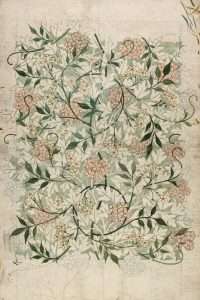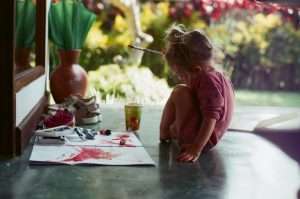Rococo is a specific style of art that was popular in France in the 18th century. It is commonly known for its whimsical and elaborate designs. Rococo has a lot of characteristics that make it what it is and so it is important to understand many details about the style’s creation, techniques, and artists. This blog will go into detail about these subjects to give the reader a better understanding of the subject matter. The topic can also be expanded with more information about specific rococo artists or pieces as time goes on.
The Rococo period of art and design, which emerged in France during the early 18th century, is characterized by its ornate decoration, playful themes, and emphasis on the natural world. The term “Rococo” comes from the French word “rocaille,” which means “rock and shell,” and reflects the style’s love of natural forms and flowing lines.
In this blog post, we will explore the art and techniques of Rococo, providing an overview of the key characteristics and techniques used in this style. We will also look at some of the most famous Rococo artists and examples of their work, as well as the legacy of Rococo art and its influence on later art movements and contemporary design.
Understanding the Rococo style requires an appreciation for the historical and cultural context of the period in which it emerged. During the early 18th century, France was experiencing a period of peace and prosperity after years of war and political upheaval. The ruling class sought to create a luxurious and extravagant lifestyle, which was reflected in the art and design of the period.
Rococo art and design is known for its playful and whimsical themes, as well as its emphasis on the natural world. The style is characterized by its use of curvilinear forms, soft pastel colors, and intricate ornamentation. Rococo artists often used asymmetry and a sense of movement to create a sense of dynamic energy in their works.
In this blog post, we will explore the techniques used in Rococo painting, sculpture, and architecture, as well as some of the key characteristics of the style. By understanding the art and techniques of Rococo, we can gain a deeper appreciation for this unique and influential period of art and design.
Table of Contents
Characteristics of Rococo Art
Rococo art is characterized by its ornate decoration, playful themes, and emphasis on the natural world. Here are some of the key characteristics of Rococo art:
- Elaborate Ornamentation – Rococo art is known for its intricate and elaborate ornamentation, which often includes motifs inspired by nature, such as flowers, leaves, and shells. These decorative elements are often used to create a sense of movement and dynamism in the artwork.
- Curvilinear Forms – Rococo art is characterized by its use of flowing, curvilinear forms, which are used to create a sense of grace and elegance in the artwork. These forms are often asymmetrical and can be seen in the shapes of the furniture, architecture, and decorative objects of the period.
- Soft, Pastel Colors – Rococo art is known for its soft, pastel colors, which are used to create a sense of lightness and whimsy in the artwork. These colors are often inspired by the natural world, such as the colors of flowers, leaves, and sky.
- Playful and Whimsical Themes – Rococo art often features playful and whimsical themes, such as depictions of cherubs, cupids, and other mythological creatures. These themes are used to create a sense of fantasy and escape from the real world.
- Use of Asymmetry – Rococo art often uses asymmetry to create a sense of dynamic energy in the artwork. This can be seen in the arrangement of furniture, the design of architecture, and the composition of paintings.
- Emphasis on Nature and the Natural World – Rococo art often features motifs and themes inspired by nature and the natural world. This can be seen in the use of floral and botanical motifs, as well as depictions of pastoral landscapes and scenes of leisure and pleasure.
By using these characteristics, Rococo artists created a unique and distinctive style that reflected the luxurious and extravagant lifestyle of the period. These characteristics continue to inspire artists and designers today and remain an important part of the history of art and design.
Techniques Used in Rococo Art
The Rococo period of art and design, which emerged in France during the early 18th century, is characterized by its ornate decoration, playful themes, and emphasis on the natural world. Rococo artists used a variety of techniques in their works, including painting, sculpture, and architecture. Here are some of the techniques used in Rococo art:
- Painting – Rococo painters used oil paint on canvas to create their works. They focused on surface decoration and ornamentation, often using soft brushstrokes and blending of colors to create a sense of lightness and movement. Rococo painters also used light and shadow to create a sense of depth and dimensionality in their works.
- Sculpture – Rococo sculptors used marble or other stone to create their works. They emphasized intricate detail and decoration, often using natural forms and flowing lines to create a sense of grace and elegance in their works. Rococo sculptures were often highly ornate, with elaborate bases and pedestals that added to their decorative appeal.
- Architecture – Rococo architects used a variety of materials, including stucco, frescoes, and plaster, to create their works. They emphasized asymmetry and curves, using light and shadow to create a sense of depth and dynamism in their designs. Rococo architecture often featured playful and whimsical motifs, such as cherubs and mythological creatures, as well as natural forms such as shells and leaves.
- Furniture – Rococo furniture was highly decorative, often featuring elaborate carvings and ornamentation. Rococo furniture makers used a variety of materials, including wood, marble, and glass, to create their works. They emphasized curvilinear forms and asymmetry, creating a sense of movement and dynamism in their designs.
- Textiles – Rococo textiles featured elaborate designs and patterns, often inspired by nature and the natural world. Rococo textile makers used a variety of techniques, including embroidery and applique, to create their works. They often used soft, pastel colors and delicate fabrics, such as silk and satin, to create a sense of luxury and elegance.
By using these techniques, Rococo artists created works that were highly decorative and ornate, reflecting the luxurious and extravagant lifestyle of the period. These techniques continue to inspire artists and designers today and remain an important part of the history of art and design.
Famous Rococo Artists and Examples of Their Work
The Rococo period of art and design, which emerged in France during the early 18th century, produced many famous artists who created works that epitomize the ornate decoration and whimsical themes of the style. Here are some famous Rococo artists and examples of their work:
- Francois Boucher – Boucher was a French painter who created works that embodied the playful and whimsical themes of Rococo art. One of his most famous works is “The Toilette of Venus,” which depicts the goddess Venus being attended to by a group of cupids.
- Jean-Honore Fragonard – Fragonard was another French painter who specialized in Rococo themes. His works often featured playful depictions of love and courtship, such as his famous painting “The Swing,” which shows a woman being pushed on a swing by a man, while a hidden admirer looks on.
- Antoine Watteau – Watteau was a French painter who is considered one of the founders of the Rococo style. His works often featured pastoral landscapes and scenes of leisure and pleasure. One of his most famous works is “The Embarkation for Cythera,” which shows couples setting off on a voyage to the island of love.
- Jean-Baptiste-Simeon Chardin – Chardin was a French painter who specialized in still life and genre scenes. His works often depicted domestic interiors and everyday objects, such as his famous painting “The Soap Bubble,” which shows a young boy blowing a bubble while his mother looks on.
- Giovanni Battista Tiepolo – Tiepolo was an Italian painter who is known for his decorative works, including frescoes and ceiling paintings. His works often featured swirling compositions and dynamic movement, such as his famous ceiling painting in the Würzburg Residence, which depicts a dramatic scene of the gods of Olympus.
These famous Rococo artists and their works continue to inspire artists and designers today, and remain an important part of the history of art and design.
Legacy of Rococo Art
The Rococo period of art and design, which emerged in France during the early 18th century, had a profound impact on the world of art and design, and its influence can still be seen today. Here are some aspects of the legacy of Rococo art:
- Influence on Later Art Movements – The Rococo style had a significant impact on later art movements, including Neoclassicism and Romanticism. Neoclassicism, which emerged in the late 18th century, sought to revive the classical style of ancient Greece and Rome, while Romanticism, which emerged in the early 19th century, emphasized emotion, imagination, and individualism.
- Continued Popularity in Contemporary Art and Design – The Rococo style remains popular in contemporary art and design, with many artists and designers continuing to draw inspiration from its whimsical themes and ornate decoration. The Rococo style has also influenced other design fields, including fashion, interior design, and graphic design.
- Impact on Decorative Arts – The Rococo period was marked by a resurgence of interest in the decorative arts, including furniture, textiles, and ceramics. Rococo furniture was highly ornate, often featuring elaborate carvings and ornamentation, while Rococo textiles featured intricate patterns and designs inspired by nature and the natural world. These decorative arts continue to be popular today and are considered an important part of the legacy of Rococo art.
- Significance for French Culture – The Rococo period was a time of peace and prosperity in France, and the art and design of the period reflected the luxurious and extravagant lifestyle of the ruling class. The Rococo style remains an important part of French culture and history, and many famous examples of Rococo art and architecture can still be seen in museums and landmarks throughout France.
Overall, the Rococo period of art and design had a significant impact on the world of art and design, and its influence can still be seen today. From its ornate decoration to its playful themes and emphasis on the natural world, the Rococo style remains an important part of the history of art and design.
Conclusion
In conclusion, the Rococo period of art and design, which emerged in France during the early 18th century, was marked by its ornate decoration, playful themes, and emphasis on the natural world. Rococo artists used a variety of techniques, including painting, sculpture, and architecture, to create works that embodied the luxurious and extravagant lifestyle of the period.
The characteristics of Rococo art, such as its elaborate ornamentation, curvilinear forms, and soft pastel colors, continue to inspire artists and designers today. Famous Rococo artists, such as Francois Boucher, Jean-Honore Fragonard, and Antoine Watteau, created works that epitomize the whimsical and playful themes of the style.
The legacy of Rococo art can be seen in its influence on later art movements, including Neoclassicism and Romanticism, as well as its continued popularity in contemporary art and design. Rococo art has also had a significant impact on the decorative arts, including furniture, textiles, and ceramics, and remains an important part of French culture and history.
By understanding the art and techniques of Rococo, we can gain a deeper appreciation for this unique and influential period of art and design. From its playful themes to its intricate ornamentation, Rococo art remains an enduring legacy of the luxurious and extravagant lifestyle of the period.



